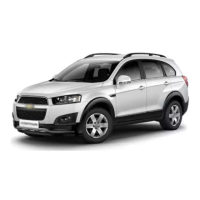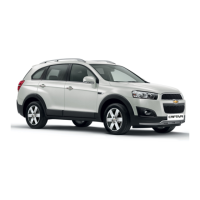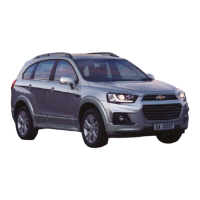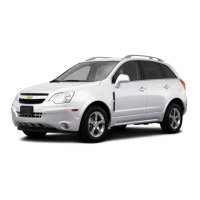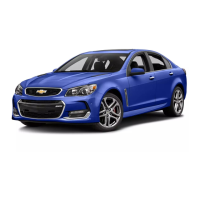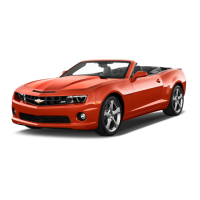Warning
When an airbag inflates, there may
be dust in the air. This dust could
cause breathing problems for people
with a history of asthma or other
breathing trouble. To avoid this,
everyone in the vehicle should get
out as soon as it is safe to do so. If you
have breathing problems but cannot
get out of the vehicle after an airbag
inflates, then get fresh air by opening
a window or a door. If you experi-
ence breathing problems following
an airbag deployment, you should
seek medical attention.
The vehicle has a feature that may
automatically unlock the doors, turn the
interior lamps on, turn the hazard
warning flashers on, and shut off the
fuel system after the airbags inflate.
You can lock the doors, turn the interior
lamps off, and turn the hazard warning
flashers off by using the controls for
those features.
2-28 Seats and Restraints
HOW DOES AN AIRBAG
RESTRAIN?
In moderate to severe frontal or near
frontal collisions, even belted occupants
can contact the steering wheel or the
instrument panel. In moderate to severe
side collisions, even belted occupants
can contact the inside of the vehicle.
Airbags supplement the protection
provided by safety belts. Frontal
airbags distribute the force of the
impact more evenly over the occupant's
upper body, stopping the occupant
more gradually. Seat-mounted side
impact and roof-rail airbags distribute
the force of the impact more evenly
over the occupant's upper body.
But airbags would not help in many
types of collisions, primarily because
the occupant's motion is not towards
those airbags. See When Should an
Airbag Inflate? on page 2-26 for more
information.
Airbags should never be regarded as
anything more than a supplement to
safety belts.
WHAT WILL YOU SEE AFTER
AN AIRBAG INFLATES?
After the frontal airbags and seat-
mounted side impact airbags inflate,
they quickly deflate, so quickly that
some people may not even realize an
airbag inflated. Roof-rail airbags may
still be at least partially inflated for
some time after they inflate. Some
components of the airbag module may
be hot for several minutes. For location
of the airbags, see Where Are the
Airbags? on page 2-24.
The parts of the airbag that come into
contact with you may be warm, but not
too hot to touch. There may be some
smoke and dust coming from the vents
in the deflated airbags. Airbag inflation
does not prevent the driver from seeing
out of the windshield or being able to
steer the vehicle, nor does it prevent
people from leaving the vehicle.
ION
UP-SHIFT LIGHT
The vehicle may have an up-shift light.
When this light comes on, shift to the
next higher gear if weather, road, and
traffic conditions allow.
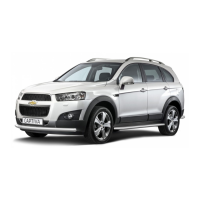
